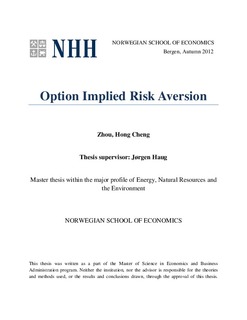Option implied risk aversion
Abstract
Risk aversion has been empirically estimated using different equilibrium models [Hansen and Singleton (1982, 1983), Mehra and Prescott (1985)]. However, the results are controversial. Jackwerth (2000) and Ait-Sahalia and Lo (2000) study the risk aversion from a different perspective. They derive the risk aversion function across wealth by using the subjective density and risk-neutral density. Under this method, they avoid using the low-frequency consumption data. In this paper, we use British capital market data to calculate the risk aversion, which can be expressed as a function of risk-neutral density and subjective density. The risk-neutral densities are estimated by two different methods, the double lognormal method of Bahra (1997) as well as the fast and stable method of Jackwerth (2000). The subjective density is generated by the GARCH Monte Carlo method.
Compared to the subjective densities, the estimated risk-neutral densities are leptokurtic with fatter left tails. Using the Kolmogorov-Smirnov test, we find that the risk-neutral densities estimated by different method are statistically different at conventional significance level. The calculated implied risk aversion functions are U-shaped across wealth. This is inconsistent with the theory of finance. Further, the U-shaped risk aversion function is stable under different settings.
